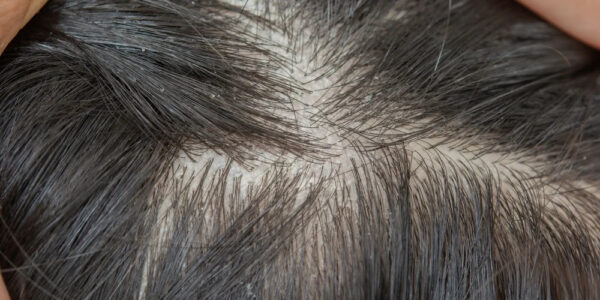Common Scalp Problems in Men

Scalp Problems in Men
It’s fairly safe to assume that in common conversations around physical appearance, the scalp is rarely mentioned. Yet, the health of your scalp plays a direct role in that of your hair, determining how it looks and feels. Whether you’re a man or a woman, scalp problems are fairly common – some linked to genetics and ageing that you can’t do much about. However, for the others, there are products and medications available that will help keep them at bay. Here are some common scalp problems in men:
- Male Pattern Baldness – This is one of the most common problems faced by men – a condition that’s usually passed down from one generation to the next. Some prominent signs of male pattern baldness are a receding hairline and loss of hair near the temples. As a part of the condition, the hair’s growth cycle begins to slow down and the hair follicle shrinks, leading to shorter, finer strands of hair. Overall, it’ll appear as if men’s hair fall is tied to men hair thinning. Eventually, the growth cycle of each hair completely shuts down and hair stops growing back.
- Dandruff – Perhaps the most common problem associated with the scalp, it becomes evident when you start seeing those white flakes on your shoulder. Dandruff in men is caused due to a build-up of oil and a naturally occurring fungus, which can trigger a reaction. It can be itchy and annoying, with redness and flaking from the scalp. If you’re looking for a way on how to get rid of dandruff, you can use a dandruff shampoo for men. Use the Head & Shoulders Anti-Hairfall, which can rescue damaged hair and leave you dandruff free.
- Seborrheic Dermatitis – Sometimes when you see flakes in your hair, it could even be a mild form of seborrheic dermatitis. Often mistaken for dandruff, this scalp problem has similar root causes – oily scalp and fungus. You can start developing red spots, severe itching, oiliness and flaking of dead skin cells. It can last longer than dandruff and can flare up for various reasons. Dandruff shampoo for men has shown to be effective, but you might require medicated products from a dermatologist.
- Head Lice – Everyone knows what lice are – wingless insects that feed on blood, roughly the size of a sesame seed. The good news is that they don’t cause any serious illness but can spread through contact with your hair. Usually when personal items like combs, towels or headphones are shared. They can cause severe itching and leave sores on the scalp. You need to use lotions, creams and shampoos that contain chemicals to kill these insects. Ensure that these don’t react with your skin.
- Folliculitis – Folliculitis is an inflammation or infection that affects the hair follicle – the sac that contains the hair root. It can be caused by germs, bacteria or even poor hygiene. Inflammation can also occur if your hair follicles get irritated from shaving or friction from clothing. Some people even get it after taking a dip in a hot tub. It can be itchy, painful and you’ll probably see small, pus-filled pimples. You should find ways to prevent folliculitis from developing, but you can also treat it with gels, ointments and cleansers.
Ringworm – While the name does suggest something else, ringworm is actually a form of fungus that leaves scaly, red patches on the scalp. Associated symptoms include itching and hair loss on the affected skin. While it’s more common in children, it does affect men too. It’s another condition that’s spread via contact, by sharing hats, clothing, towels and even combs. You need oral medication to treat ringworm, while simultaneously using an antifungal shampoo to reduce the risk of spreading it around. It’s advised to not share your personal belongings with those around you.








